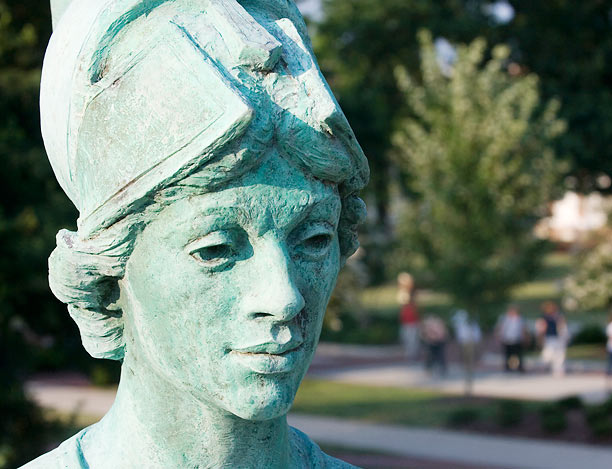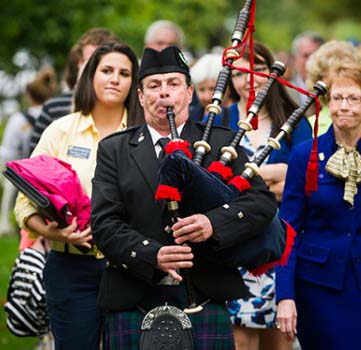Convocation at UNCG: History and Symbols
On October 5, 1892, just under 200 students began classes at the institution then known as the State Normal and Industrial School (now UNCG). As the student body grew, campus traditions and symbols developed. Convocation in some form has been a part of UNCG tradition for decades. Early versions of Convocation included campus-wide picnics, movies, and skits led by upperclass students.
Our Convocation activities today draw on many of the traditions associated with the earlier Convocations, while also adapting to changes in culture and our University.
University Symbols
Many of the symbols and traditions associated with Convocation date back to the earliest years of the University. Those symbols and traditions include:

The University Bell is rung at the conclusion of ceremonial occasions. It rang out at the opening of the State Normal and Industrial School on October 5, 1892. Electric bells were installed forty years later. The Bell hung in the Anniversary Plaza from 1967 to 1987, when it was removed for restoration commissioned by the Class of 1940.

The University Flag bears the traditional University colors of gold, white, and navy blue. Gold and white were the original colors and first used in the commencement ceremony of 1894. Navy blue became the third official color in 1987. The University Seal appears on both sides of the flag.

Minerva, the goddess of Wisdom and Women’s Arts, has been the symbol of the University since appearing on the first diplomas issued in 1893. A statue of Minerva, which sits in the east courtyard of the Elliott University Center, was given as a gift to the University by the Class of 1953 on their 50th class reunion in 2003.

The Spartan was selected as the UNCG athletics mascot in the Fall of 1967. The coaching staff and students chose the name, in part, because it suggested a sense of courage.

Daisies were chosen as the school flower by the Class of 1893. From 1900 until the late 1960s, sophomores would create a “daisy chain,” long ropes of daisies that would be used during commencement exercises.

Bagpipes were first used during Convocation in Fall 1999. The bagpipes are meant as a tribute to the Scots-Irish heritage of Charles Duncan McIver, the founder and first president of the school.